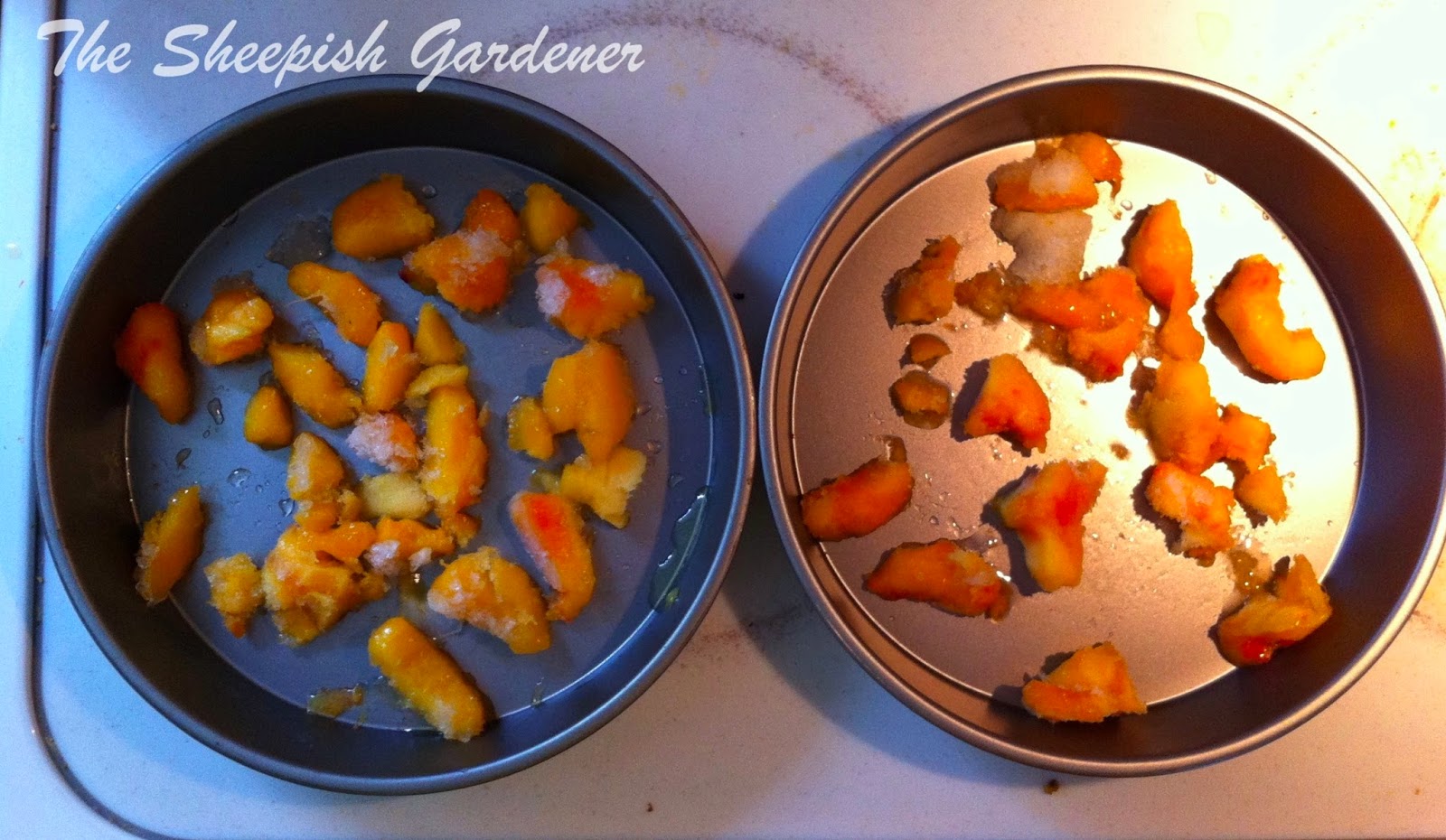I'm not just talking about the weather, although I'll to that wonderful bit of pleasantry. Here at the homestead, things are moving along. We have slaved in the few hot days we've had, and my husband has been working 6-day weeks at work and coming home to work on the chicken coop. But the rewards are beginning to roll in.
Most important is that fact the the chickens are out of the house! Yay! No more dander, stink, or crowing in the house. No more going to let Boo-boo out and loading up food, water, and chickens to take outside every morning, and reversing the process every night. Time to clean house.
They are mostly happy to be in the coop, but Boo-boo wants to go outside. That's what she's used to, after all. The Littles are in a large dog cage after Gracie attacked James last week when I tried to combine their pens.
They are still laying eggs, though! I'll admit I was worried the stress of the move may stop production for a while, but Boo-boo laid and egg the first day, and I found two the next day!
 |
| Boo-boo laid an egg in the peppermint. Can you see the little blue egg in the shavings by the door? |
Our butterflies are beginning to emerge from their chrysalises, too. We found one ready for flight Tuesday afternoon, and another came out while I was writing this. We'll let its wings dry for a couple hours before we take it outside to the bee balm. The bee balm is the only plant with flowers right now, so I am especially thankful for it this year. (Although my yellow climber rose has started to revive and is flowering again, the Japanese beetles are devouring it, so the flowers only last about a day.)
.jpg) |
| A few minutes after emerging. Notice the chrysalis at the bottom. |
.jpg) |
| Bug found this one ready to go outside and spread its wings. |
I started on my pallet garden Tuesday, as well. I got all the gourd plants in, but I'm worried I'm going to run out of soil. I had no idea this project would require so much. I do love the rugged, old-farm look it adds to the now bare flower bed around the house.
 |
| Pallet Garden 8 Martins, 2 Dippers, 2 Sennaris |
The house next door where I feed the cats in the barn is now under contract. I met the buyer--well, the husband portion of a couple--and he seemed like a nice guy. He was friendly and excited about the property. They plan to make it a small farm of sorts, restoring the gardens and bringing in horses. You know I'll be in heaven with horses next door. The only thing that could trump that would be having my own out my back window. I love watching Dano and Josie across the street, but in summer the trees' green foliage blocks my view, and they are so far away.
To top everything off, we have had the best weather this month. I don't recall ever having such a mild July. I am loving it. We can play or work outside almost every day without the extreme heat and humidity we usually have here in the Chesapeake Bay watershed area. We have had a handful of nasty days, but otherwise it's been heavenly. If only I had time to go horseback riding in this delightful weather.
 |
| Ahh. One day I shall mount up again. |
Life is good!


.jpg)












.jpg)


.jpg)
.JPG)
.JPG)



.jpg)
.jpg)
.jpg)

.jpg)
.jpg)
.jpg)
.jpg)
.jpg)

.jpg)









